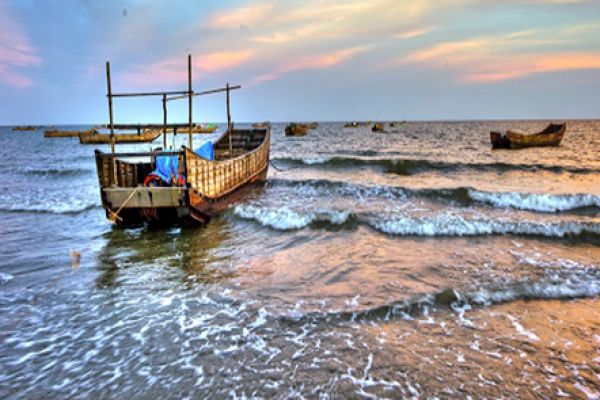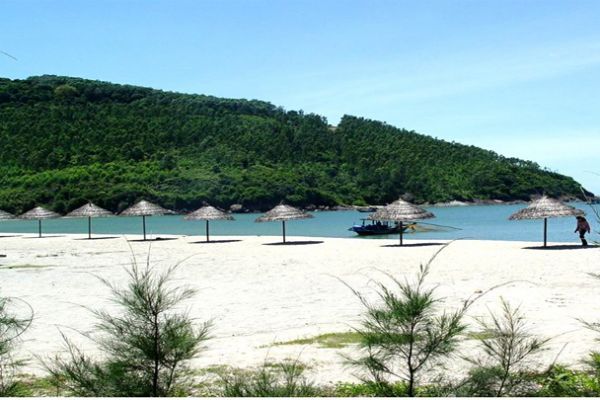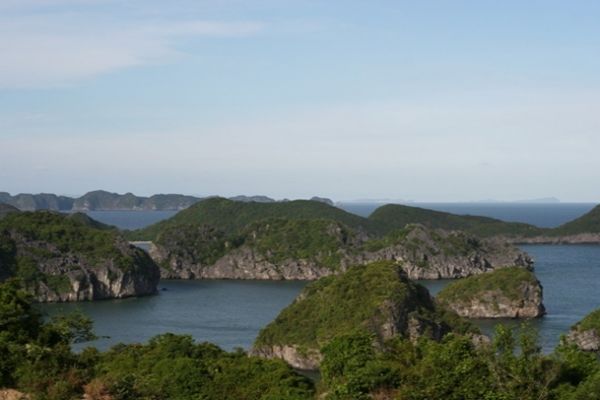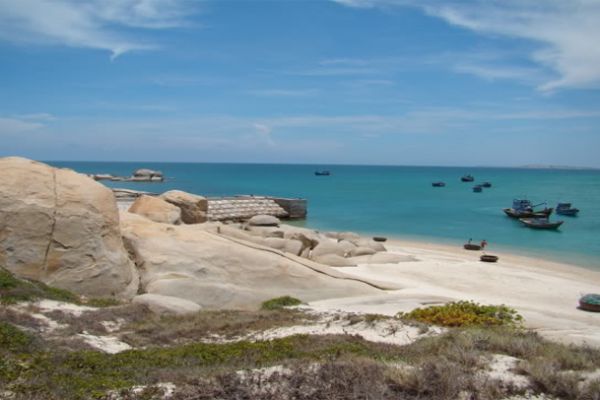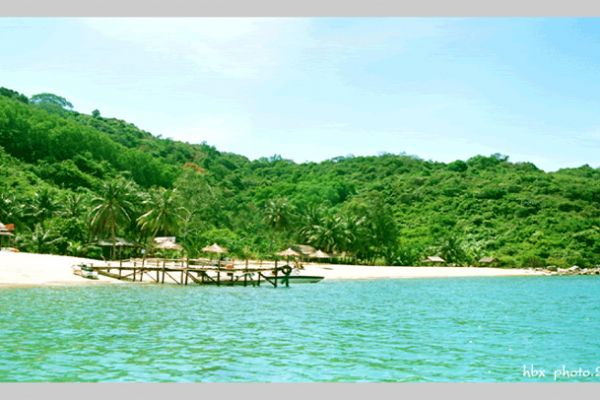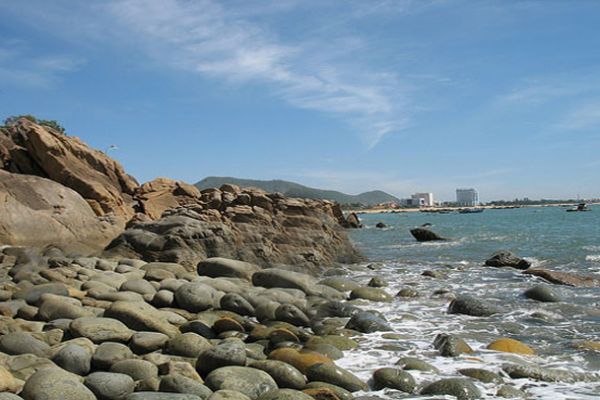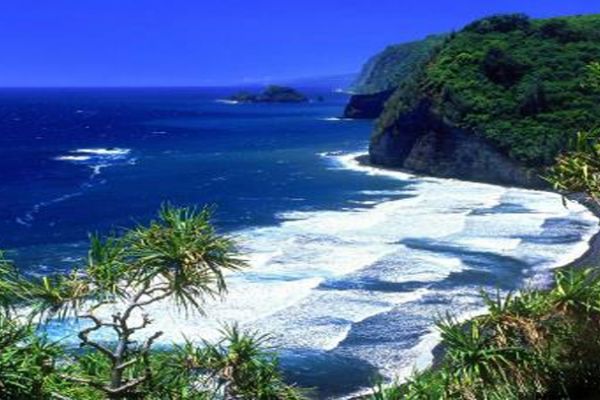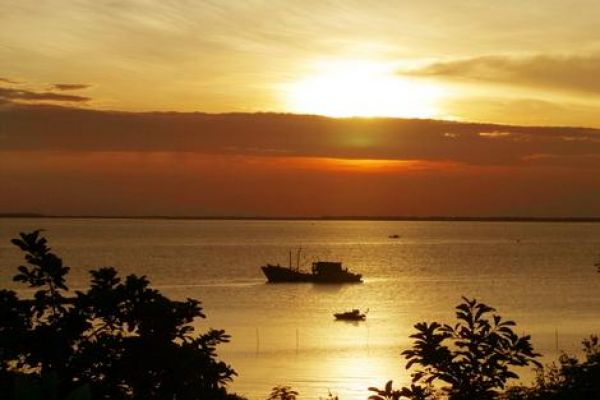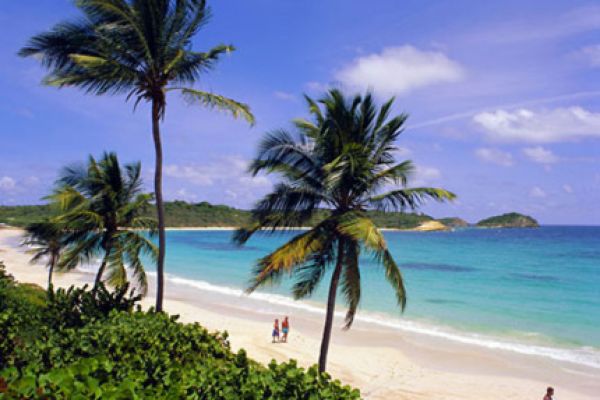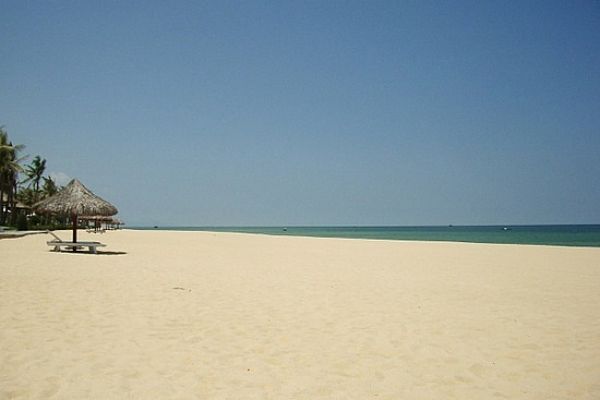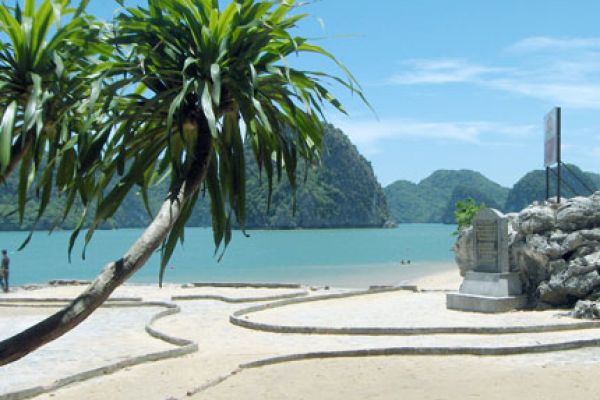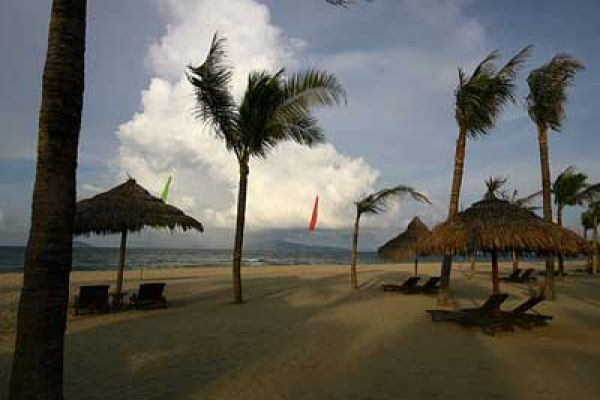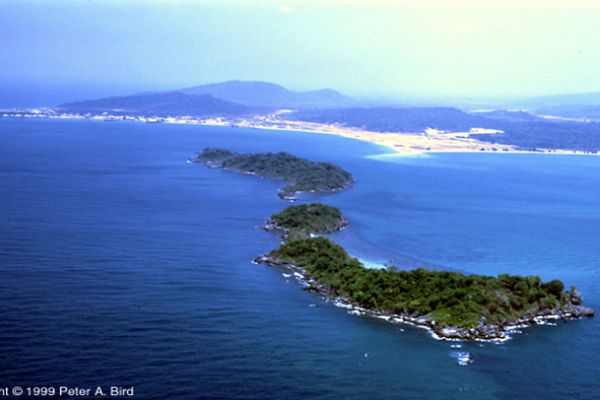
Phu Quy Island, whose name means "rich and precious," lies about 100 km to the east of Phan Thiet City; close to the international maritime route and on the continental shelf. The Island is an important stop between the mainland and Truong Sa (Spratley Island) archipelago; 20 km further away. Its a “floating base;” providing services to ships fishing offshore via its seaport on Trieu Duong Beach.
Only 32sq.km and with a population of 20,000, Phu Quy Island occupies a small dot on the map of Binh Thuan. The locals call it Hon Thu or Mackerel Island, because from the southwest direction, the islet looks like a cod emerging from the sea. Within a few years, Phu Quy has changed drastically, due to the burgeoning seaport at Trieu Duong Beach. The buildings are climbing higher, and an asphalt road, instead of the old sandy path, now circles the island.
Phu Quy has preserved its natural features – the warm sand glistens with shells and coral and the water is teeming with sea life. This tiny islet has huge unexploited tourist potential. It still has no rated hotels, but tourists can enjoy a peaceful night under the starry sky and explore nearby caves. You can eat fragrant corn cobs and fresh fish grilled over a roaring campfire. Coconut orchards provide shade for camping and coconut milk and copra for meals. Diving is also a possibility. According to locals, the sea floor around Phu Quy is covered with coral and rocks that are home to many sea creatures.
In the island, several pagodas and temples such as Linh Quang, Cao Cat, An Than have been recognized to be cultural -historic relics. Linh Son Tu (Sacred Mount) Pagoda, is the oldest pagode on Phu Quy. It was built in 1747 in the time of King Le Hien Tong (whose regal name was Canh Hung the 18th) on Cao Cat Hill, in Tam Thanh Village. The pagoda has preserved many documents about the life of the local islanders as well as many ancient cultural objects. Oddly shaped mountains and caves pepper Phu Quy Island’s interior. On top of Mountain Cao Cat, Linh Son Pagoda rests peacefully under a banyan tree. Located here is another worship site, with a statue of "Kuan Yin," the goddess of compassion. At the summit is a lovely panoramic view of the island's beaches and immense rock formations.

Phu Quy Port
The island is surrounded with white sandy beaches and 9 islets, of which Hon Tranh, Hon Den, Hon Trung are attractive aqua tourist spots. Hon Tranh, a small island shaped like an S, is half a kilometer to the South-East. The island contains beautiful mountains and long, pristine beaches. Hon Tranh also has excellent scuba diving and snorkeling in its pink coral reefs. The highest point on the island is Mount Cam Dat, at 106 m. Phu Quy has thick stands of tall trees and long, pristine beaches. Only the rocky, northern half of the island is inhabited, with a population of 20,698 people. The southern end offers long, deserted stretches of sandy beaches.
Visitors arrive at the wharf, and travel a narrow road, flanked by densely packed houses. The first stop is Van Tam Thanh, a peaceful locale with red, basalt soil; once covered by pineapple plantations. Here you can view the skeleton of a gigantic whale that the local people worship as "Ca Ong", or the "Lord Whale."
Phu Quy is an important in-between logistic destination linking the mainland to Truong Sa archipelago. It is a “floating base” providing services to ships fishing offshore. With such an important position, people built a light house guiding ships going out and coming in. The island’s lighthouse, built in 1997, sits on Mountain Cam. The lighthouse is one of only two in the country that runs on solar energy.
If having a chance, you should not miss the trip to discover the underlying beauty of Phan Thiet City by once setting your foot into the space of pristine Phu Quy Island...

